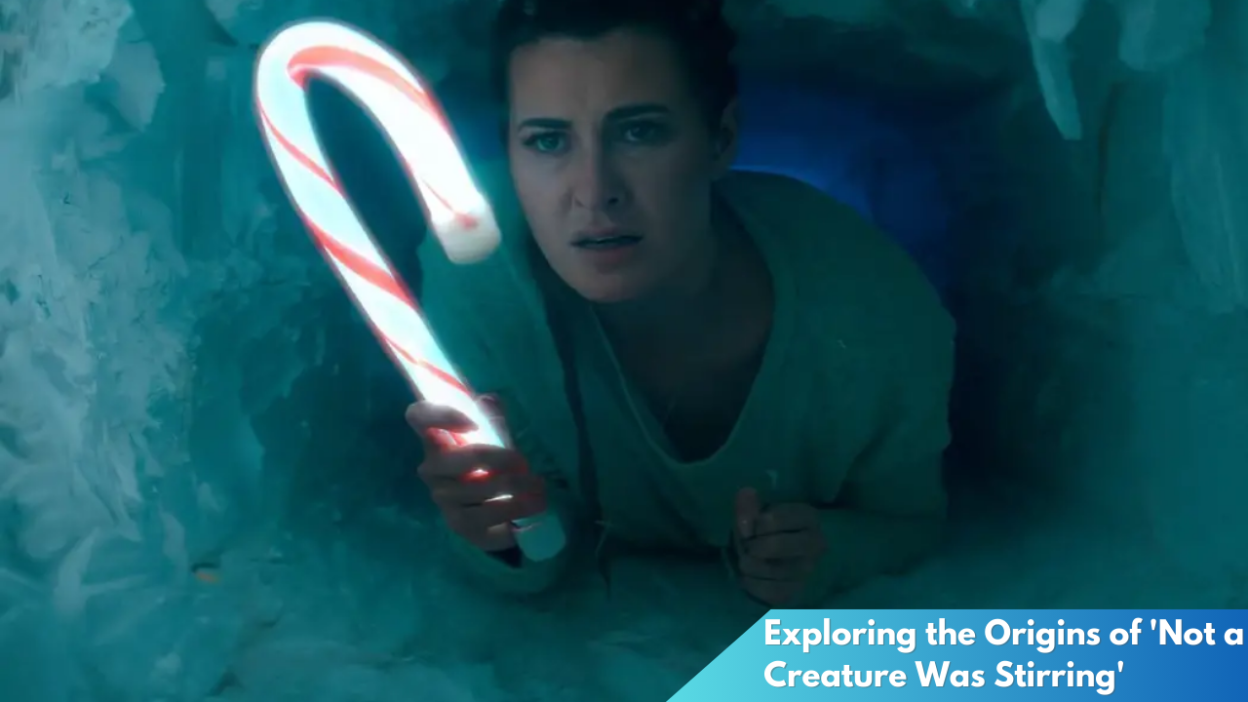The phrase “Not a creature was stirring” is etched into holiday traditions, evoking images of silent, snow-capped nights and warm hearthside gatherings. As one of the most recognizable lines from the classic poem “A Visit from St. Nicholas,” it has become a cultural touchstone, seamlessly blending with festive celebrations. This article embarks on a journey to trace the origins and delve into the history of this beloved holiday phrase, exploring its impact on seasonal customs and its lasting charm.
Tracing the Roots of a Classic Holiday Phrase
The phrase “Not a creature was stirring” originates from the opening lines of “A Visit from St. Nicholas,” more commonly known as “The Night Before Christmas.” Written by Clement Clarke Moore in 1823, this poem has played a significant role in shaping the modern image of Christmas in the Western world. Moore’s depiction of a tranquil, expectant household awaiting Santa Claus captures the innocence and anticipation of the holiday season. The phrase itself paints a picture of stillness and peace, qualities that resonate deeply with the spirit of Christmas.
But what inspired Moore to craft these iconic words? Historians suggest that Moore drew from his experiences and surroundings, employing vivid imagery to engage readers’ imaginations. The quietude described in the poem reflects a night of calm introspection, reminiscent of the serene winter evenings he might have observed. Moreover, it is possible that Moore’s academic background in classical literature and linguistics informed his evocative word choice, making the phrase not only memorable but also steeped in literary tradition.
The phrase’s roots extend beyond Moore’s personal inspiration, touching on broader cultural and historical contexts. The early 19th century saw a growing fascination with folklore and traditions, particularly those surrounding Christmas. Moore’s poem tapped into this enthusiasm, capturing the public’s imagination and contributing to the evolving celebration of Christmas as a family-centric holiday. As such, “Not a creature was stirring” not only signifies a moment of poetic brilliance but also embodies a pivotal shift in how Christmas was perceived and celebrated.
Delving Into the History of ‘Not a Creature Was Stirring’![A Creature Was Stirring [REVIEW] - That Hashtag Show](https://thathashtagshow.com/wp-content/uploads/2023/12/project_20231209_1056460-01-1280x640.png)
The publication history of “A Visit from St. Nicholas” offers insight into the phrase’s rise to prominence. First published anonymously in the Troy Sentinel on December 23, 1823, the poem quickly gained popularity. Despite its modest debut, it was reprinted countless times in newspapers and magazines, engraining itself in the American holiday lexicon. As the poem’s reach extended, so too did the influence of its memorable lines, including “Not a creature was stirring,” which became synonymous with the quietude of Christmas Eve.
The phrase’s resonance can also be attributed to its adaptability and versatility in various cultural contexts. It has been referenced and parodied in countless works of literature, film, and television, often used to evoke a sense of nostalgia or to set the scene for a festive narrative. This broad appeal underscores the phrase’s ability to transcend its original literary confines and become a part of popular culture. In this light, the phrase serves as an anchor in the evolving tapestry of holiday traditions, linking past and present through shared cultural touchstones.
As “A Visit from St. Nicholas” continued to influence holiday customs, the phrase became a hallmark of Christmas-themed advertising and merchandise, further solidifying its place in the public consciousness. Retailers and marketers have long capitalized on the poem’s evocative imagery to create a sense of warmth and tradition, using it to enhance the festive appeal of their products. This commercial aspect, while perhaps diluting the phrase’s original literary purity, has nonetheless played a role in ensuring its survival and relevance in contemporary celebrations.
The journey of “Not a creature was stirring” from a single line in a 19th-century poem to a ubiquitous holiday expression is a testament to its enduring charm and cultural significance. It encapsulates the essence of Christmas Eve’s tranquility and the magic of anticipation, resonating with generations of readers and listeners. As we continue to recite these words each holiday season, we are reminded of their rich history and the timeless traditions they inspire, weaving a thread through the fabric of our shared cultural heritage.



